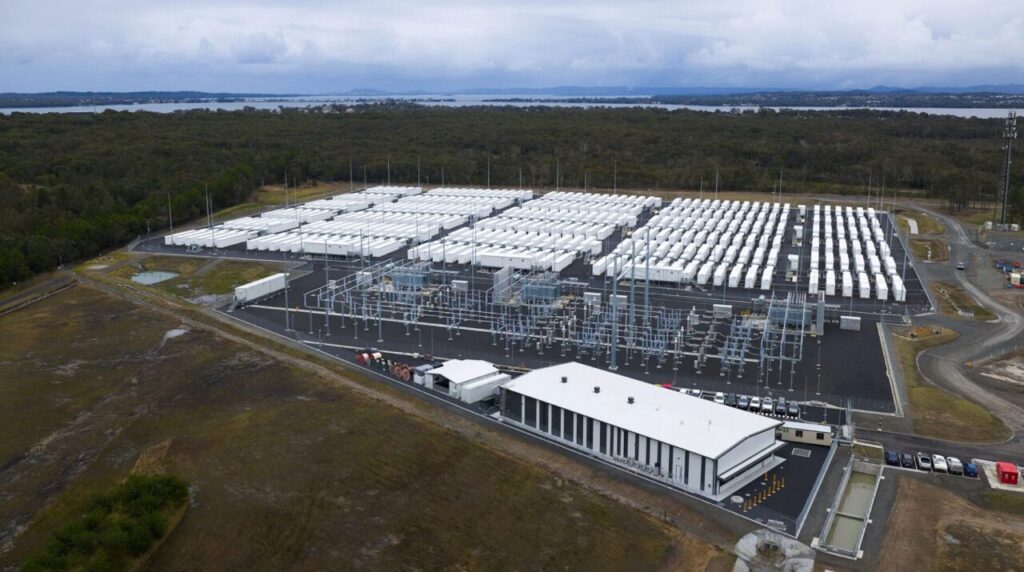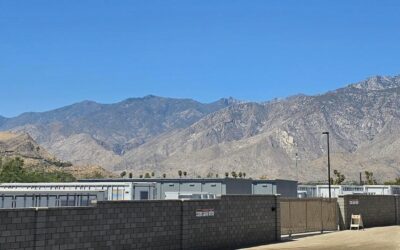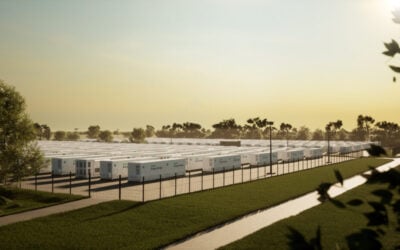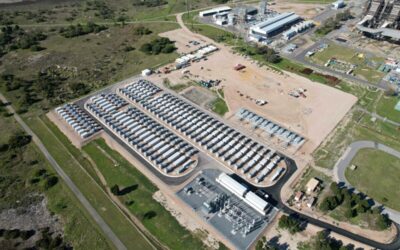
The 850MW Waratah Super Battery in New South Wales, Australia, has experienced a temporary reduction in operational capacity due to transformer issues identified during testing as it transitions to full output, according to project developer Akaysha Energy.
This comes amid reports in various news outlets, such as the Australian Financial Times (AFR), regarding a “catastrophic failure” of transformer equipment at the site of the world’s most powerful battery energy storage system (BESS) (ESN Premium access).
A spokesperson from Akaysha Energy told Energy-Storage.news that the company “notified the energy market of a temporary loss of capacity at the battery due to a transformer outage.”
Although the transformer issues occurred last month, the facility continues to operate at a 350MW capacity while engineers address the technical issues affecting two of the three transformers at the site.
Enjoy 12 months of exclusive analysis
- Regular insight and analysis of the industry’s biggest developments
- In-depth interviews with the industry’s leading figures
- Annual digital subscription to the PV Tech Power journal
- Discounts on Solar Media’s portfolio of events, in-person and virtual
According to the AFR reporting, Waratah had suffered “damage to a transformer” and that it was “beyond repair”.
During ongoing Hold Point testing designed to bring the battery to its full capacity, issues were identified with two transformers that required immediate attention.
The two transformers are undergoing detailed engineering inspection on site, with rectification and replacement decisions pending the outcome of diagnostic work.
The spokesperson confirmed that “the Waratah Super Battery is still operating at 350MW capacity and actively bolstering energy security for the New South Wales grid.”
How will this impact the Waratah Super Battery SIPS agreement?
Akaysha Energy added that it maintains its ability to provide critical grid services despite the reduced capacity, with the spokesperson noting that “the Waratah Super Battery continues to meet its System Integrity Protection Scheme (SIPS) service requirements of 350MW, which is the interim commercial operating capacity.”
The SIPS agreement with transmission operator Transgrid is a core component of the Waratah Super Battery and its ability to operate as a “giant shock-absorber for the grid.” It enables Transgrid to send signals to the BESS to inject energy into the grid while simultaneously instructing paired generators to adjust their output.
Specifically, the SIPS Control System can monitor 36 transmission lines in real time and respond instantaneously to system events.
The situation does not indicate broader system issues or safety faults at the facility, which remains operational and connected to Australia’s National Electricity Market (NEM).
Akaysha Energy expects the battery storage system’s remaining capacity, which will see it sized at 850MW/1,680MWh, to return online during 2026, according to the spokesperson.
The Waratah Super Battery achieved a significant milestone in October when it discharged its first full output to Australia’s NEM, demonstrating its capability to provide large-scale grid services.
The project’s design as a giant shock absorber for Australia’s power grid enables it to respond rapidly to grid disturbances and maintain system stability even while operating at reduced capacity. The facility’s continued operation at 350MW demonstrates the resilience built into the system design.
The transformer issues do not affect the project’s financing arrangements. The facility continues to generate revenue through its grid services contracts while operating at the interim capacity level.
Another important element to note is that transformers can often be costly to replace, with potential long delays depending on where they are sourced.
However, Akaysha Energy confirmed to Energy-Storage.news that the transformers were manufactured by an Australian-based company (Wilson Transformer), providing advantages for the diagnostic and rectification process.
In doing so, all diagnostic, rectification, and re-commissioning activities can be undertaken locally, allowing faster turnaround times and close oversight of the repair process.
The engineering inspection process involves comprehensive testing to determine the exact nature of the transformer issues and the most appropriate solution. This may involve rectifying the existing transformers or replacing them with new units, depending on the findings of the detailed technical assessment.
The Waratah Super Battery’s continued operation during the transformer issues demonstrates the redundancy built into large-scale battery storage systems. The facility can maintain critical grid services while addressing technical issues, ensuring continuity of service to the electricity market.





